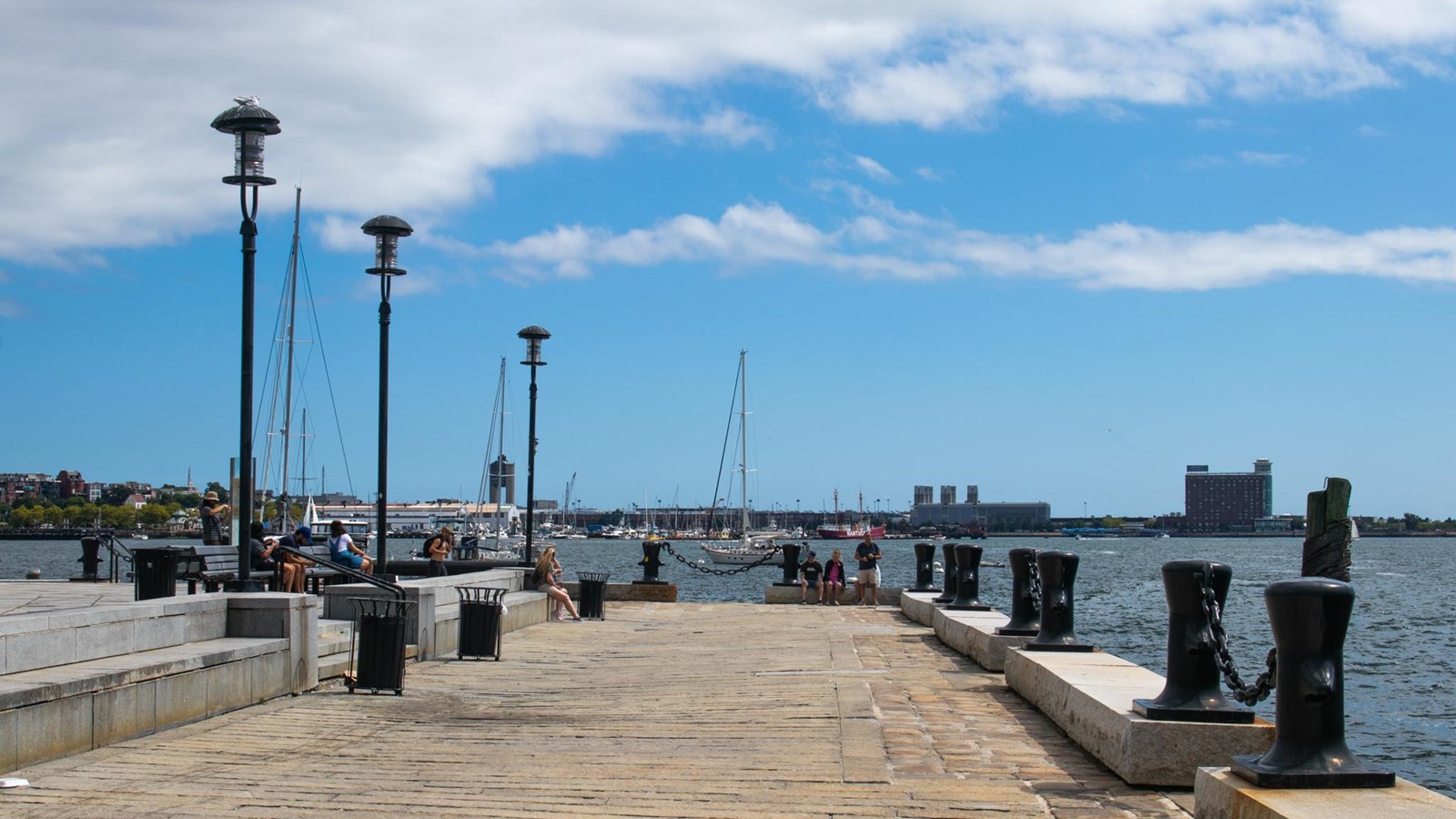Last updated: September 16, 2024
Place
Long Wharf South

NPS Photo/Witham
Located at the base of today's State Street, Long Wharf served as the nucleus of Boston's maritime trade. Construction around 1710-1721 extended the wharf a half a mile into the harbor. Over the coming centuries, the city was built up closer and closer behind Long Wharf, until present day where the wharf is only 0.1 of a mile from the shoreline.
In the 1880s, the Boston Fruit Company operated out of the southern part of Long Wharf. Merging with a rival company in 1899, the Boston Fruit Company became the United Fruit Company.1 They headquartered in Boston with their presence on the southern part of Long Wharf and a building on State Street.2 The United Fruit Company operated a steamship service between Boston and Cuba, Jamaica, and Panama. The steamships of the “Great White Fleet” not only brought New Englanders to the Caribbean, but also brought many Caribbean immigrants to Boston in the early 20th century.3
Today, ferries to the Charlestown Navy Yard operate out of Long Wharf South, in addition to seasonal commuter and sight-seeing cruises.
Footnotes
- Norman B. Leventhal Map & Education Center, “Atlasscope Boston,” Accessed August 20, 2024, Atlascope Boston · Leventhal Map & Education Center; James Wiley, The Banana: Empires, Trade Wars, and Globalization, (University of Nebraska Press, 2008), 12, The Banana: Empires, Trade Wars, and Globalization - James Wiley - Google Books.
- Colby, Jason M. “Race, Empire, and New England Capital in the Caribbean, 1890-1930.” Massachusetts Historical Review 11 (2009): 15. http://www.jstor.org/stable/40345978.
- Global Boston, “United Fruit Company 1-L,” Accessed August 20, 2024, United fruit company 1-L - Global Boston (bc.edu); “United Fruit Company Steamship Service, 1915,” Hearst’s Magazine, December 1915, Archive.org.
